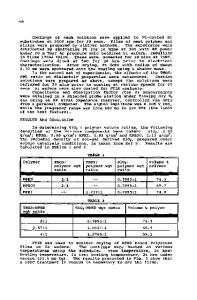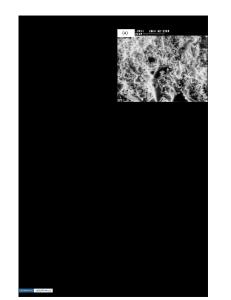High-frequency dielectric characterization of novel lead-free ferroelectrics
- PDF / 1,347,627 Bytes
- 10 Pages / 595.276 x 790.866 pts Page_size
- 72 Downloads / 335 Views
High-frequency dielectric characterization of novel lead-free ferroelectrics Gomasu Sreenu1, Mahfooz Alam1, Didier Fasquelle2,*, and Dibakar Das1,*
1 2
School of Engineering Sciences and Technology, University of Hyderabad, Hyderabad 500046, India ˆ te D’Opale (ULCO), CS 80699, 62228 Calais Cedex, Unit of Dynamics and Structure of Molecular Materials, University of Littoral Co France
Received: 17 June 2020
ABSTRACT
Accepted: 31 August 2020
Novel lead-free BFO–STO, BFO–CTO, and BFO–BZO ceramics were fabricated by the conventional method and their structural, microstructural, and dielectric properties were characterized. Dielectric measurements were carried out at room temperature in a large frequency range, from 20 Hz to 1.8 GHz. XRD analysis has demonstrated differences in the crystalline structure of the samples. BFO–STO exhibits a very different behavior compared to BFO–CTO and BFO– BZO ceramics because its XRD pattern contains peaks from diffracting planes of BFO and STO simultaneously. In comparison, the diffraction patterns of BFO– BZO and BFO–CTO are dominated by the peaks from diffracting planes of BZO and CTO, respectively. SEM observation has also revealed important differences in their microstructure. BFO–BZO and BFO–CTO have presented similar values of dielectric constant at low and high frequencies, e0 * 85 from 1 to 100 MHz. The lowest value of the loss tangent was measured on BFO–CTO with tan d = 5 9 10–3 at f = 50 MHz. The BFO–STO ceramic has given higher values of the dielectric constant, closer to those reported for the bulk STO. Nearly frequency-independent high dielectric constant with very low loss over a broad frequency range (20 Hz to 1.8 GHz) of BFO–STO ceramic makes this material a potential candidate for high-temperature and high-frequency application with superior energy performance.
Ó
Springer Science+Business
Media, LLC, part of Springer Nature 2020
1 Introduction Perovskite ceramics with excellent ferroelectric, paraelectric, and particularly high-frequency dielectric properties are suitable for various high-temperature and high-frequency applications. In bulk form
they may be used as dielectric resonators and filters in communication devices [1, 2], as window sections in microwave window in fusion reactors [3, 4], or as high power antennas in pulsed power transmitters [5, 6], where high relative permittivity (er), highquality factor (Qf), very low dielectric losses (tan d),
Address correspondence to E-mail: [email protected]; [email protected]
https://doi.org/10.1007/s10854-020-04391-7
J Mater Sci: Mater Electron
and an extremely low-temperature coefficient of resonant frequency (sf) are the most important material properties. In film form, they may be used in highfrequency capacitor applications, such as decoupling capacitors and tunable microwave capacitors [7, 8]. Capacitor dielectrics are also used in advanced packaging applications [9, 10]. Since the dielectric constant may be strongly dependent on voltage, permittivity tailored thin film capacito
Data Loading...











